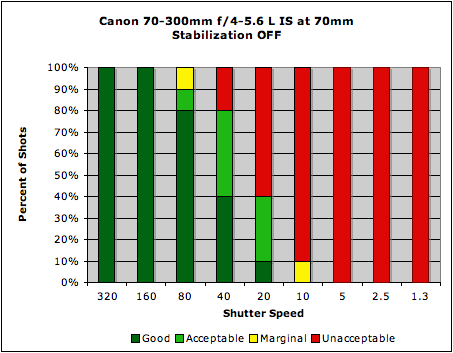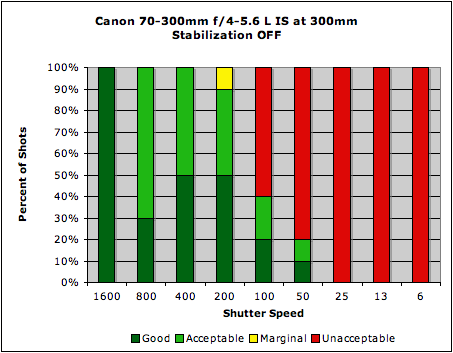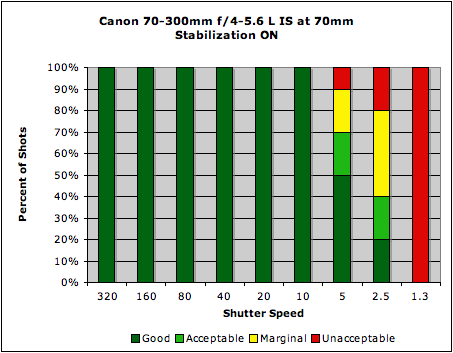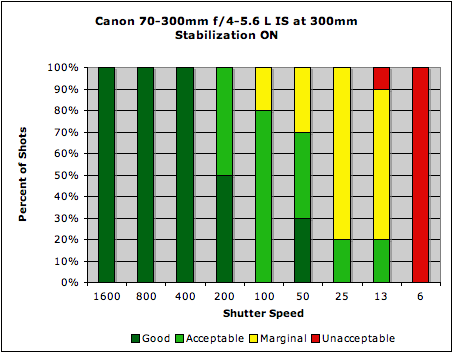Most people tend to think of image stabilization as being mainly for telephoto lenses. While it's true that their longer focal lengths tend to magnify the effects of camera shake, image stabilization can provde a very useful assist at wider angle focal lengths as well; anyone who's ever tried to blur the image of a waterfall, while keeping the surrounding landsape tack-sharp knows exactly what I'm talking about.
At 70mm, the lens performs more or less as advertised, giving somewhere in the range of 4 stops of improvement. Very stable shooting is possible down to shutter speeds as slow as a tenth of a second.
 |
| Mouse over this chart to show results with IS activated. |
On the telephoto end (300mm) we noted some interesting results; it's not as sharp a drop-off, with stabilization on or off.
 |
| Mouse over this chart to show results with IS activated. |
Our technician Rob had to go to a very high shutter speed to get all 10 shots in the "Good" range, although he got all 20 in the "acceptable" range down to 1/400. With IS on, we saw a few "marginal" shots start creeping in as early as 1/100 sec, but the lens managed to eke out 2 out of 10 shots in the "acceptable" range all the way out to 1/13 second. Overall we would slot it with a solid 2 stops of improvement, but it's interesting that it managed to deliver at least a few shots all the way down to 1/13.
IS systems tend to provide more benefit to less-stable shooters than very steady ones, so most users will see the same or greater amounts of shake reduction as we measured here. You can read more about our IS test methodology here: SLRgear IS Test Methodology, v2.

